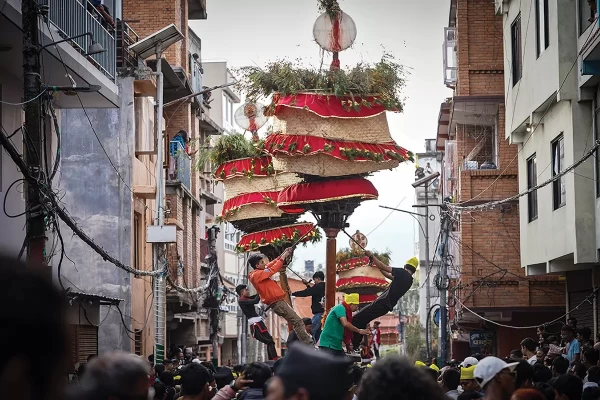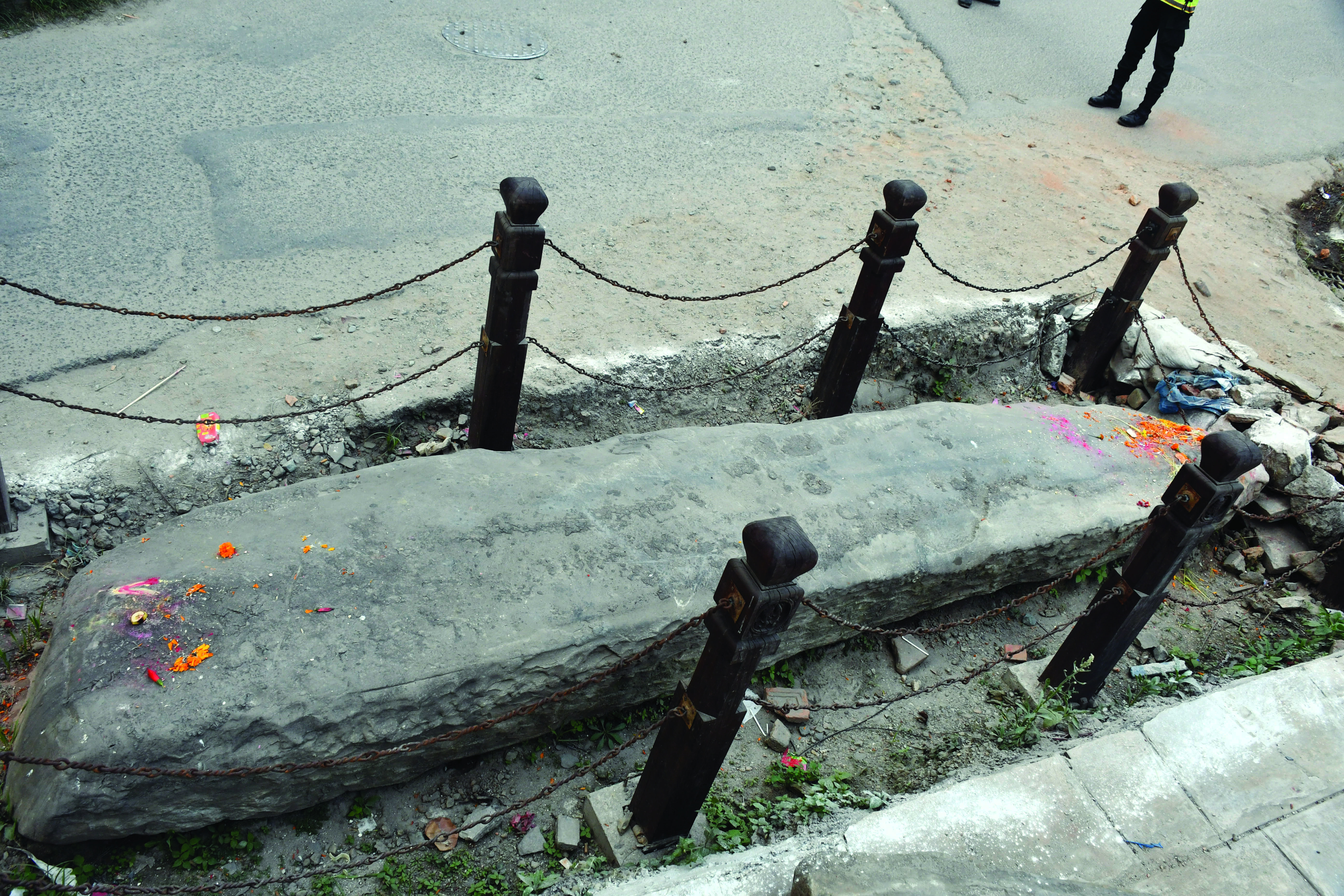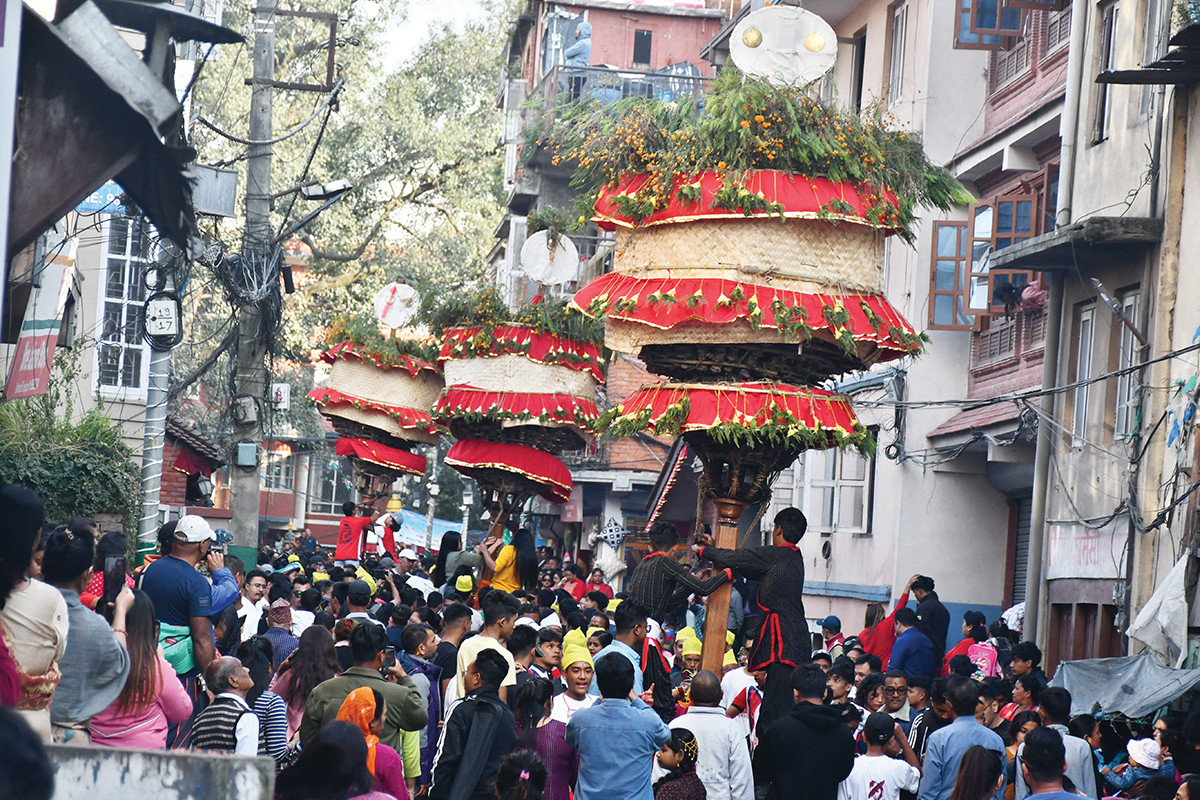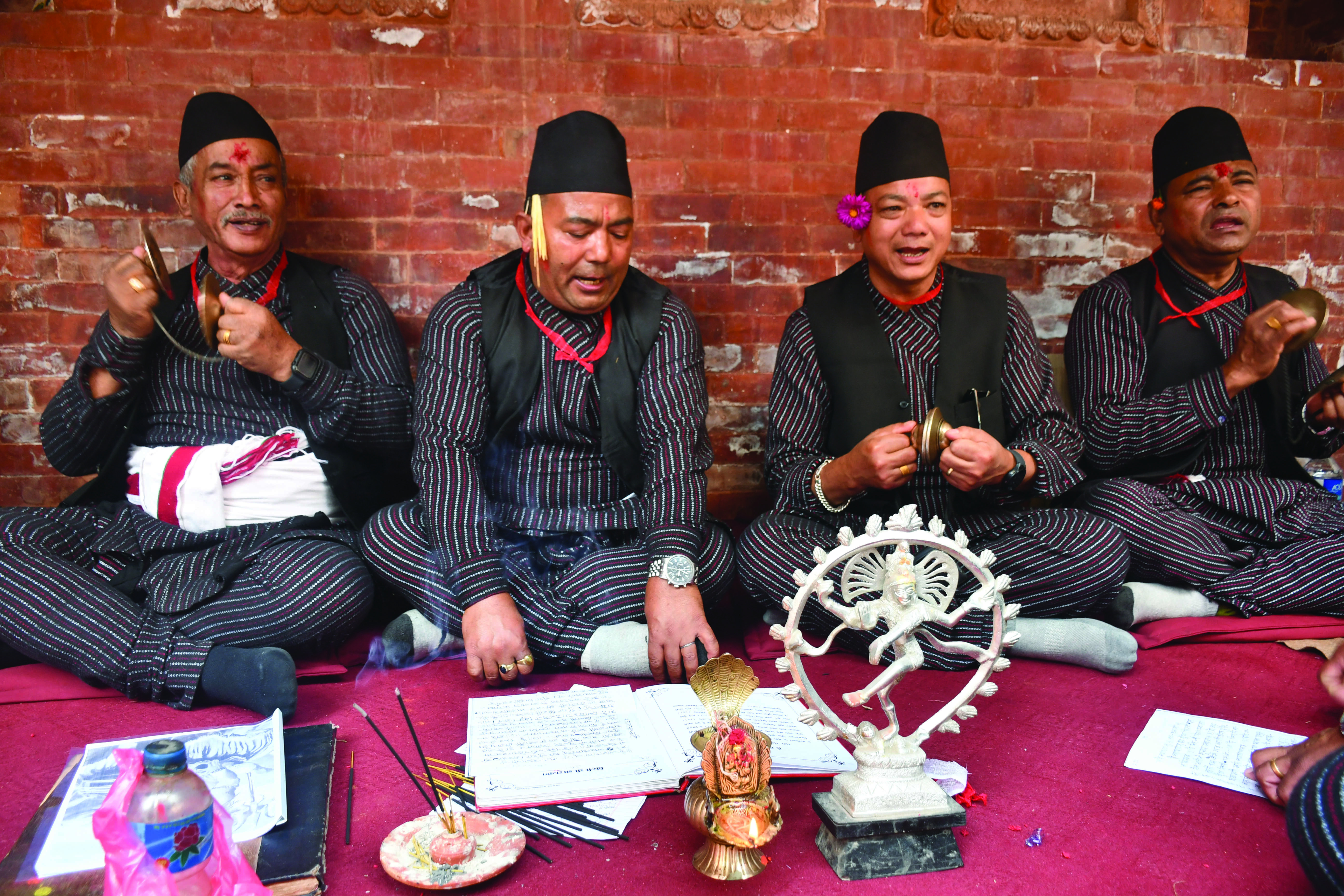The Unique Festival of Handigaun

There is a tradition of pulling the chariots of God and Goddess in the various Jatra festivals of Kathmandu. Generally on the chariot (khat), the gajur or the pinnacle is placed on the top, pointing towards the sky. The idols of the goddess are placed below the gajur inside the chariot. However, in a festival celebrated every year in Handigaon, Kathmandu, the chariot’s gajurs are turned upside down. That is, the gajur is placed at the bottom of the chariot while the deity is placed at the top.  At a glance, the upper part of the khat resembles an umbrella which is constantly rotated with the help of ropes and paraded around the area. The khat reflects the mountains, hills and the terai. The upper part of the khat is wrapped with white cloth to make it look like a mountain. Flowers made of beeswax is offered there as ‘Himali Phool’. After that, it is wrapped with ‘mandra’ and given the shape of a mountain, while a flower garden is prepared from flower branches to reflect the terai plains. In this way, lotus shaped chariot gives a glimpse of mountains, hills and plains.
At a glance, the upper part of the khat resembles an umbrella which is constantly rotated with the help of ropes and paraded around the area. The khat reflects the mountains, hills and the terai. The upper part of the khat is wrapped with white cloth to make it look like a mountain. Flowers made of beeswax is offered there as ‘Himali Phool’. After that, it is wrapped with ‘mandra’ and given the shape of a mountain, while a flower garden is prepared from flower branches to reflect the terai plains. In this way, lotus shaped chariot gives a glimpse of mountains, hills and plains.

This festival is celebrated for three days from the day after the full moon of Dashain in Handigaon area located in Kathmandu Metropolitan City-5. Three chariots are paraded around which represent the father, mother and the son or Brahma, Vishnu and Maheswar. On the third day of the Jatra, the chariot is abandoned. One chariot is kept in Bhuteshwar of Handigaon, another in Nyalm and another in Kotal. It is carried around Handigaun only during the festival. Bhuteshwar’s chariot is considered Brahma (Father), Nyalm’s the son (Vishnu), and Kotaltol’s chariot is considered the mother (Maheshwar). The chariot of Bhuteshwar is also worshiped as a symbol of Budhanilkantha, the chariot of Nyalma is Chokkathu Narayan and the chariot of Ketal is also worshiped as the symbol of Shankhamul Narayan.
The festival begins only after the Rajopadhyay priest of Devpattan in Pashupati performs puja rituals for the chariots. In the jatra, it is customary for five people to play the traditional Dhime drums and another 30 people to carry the chariot. The Handigaun Jatra is also known as the Chokkathu Narayan (Three Narayans) Jatra. There is a temple of Chokkathu Narayan at Bhuteshwar in Handigaon.
You may also read: The Unique 12 Years Festivals of Nepal | Barha Barsey Mela
History states that the Handigaun jatra began from the time of the Malla King Narendra Malla. Every festival has its own characteristics. Our Jatra of Handigaon is also different from others. But people mock the festival by saying “kahi nabhayeko jatra Handigaun ma”, meaning, Handigaun has a pointless festival. People shouldn’t make fun of someone’s culture but instead respect the customs and traditions. Dr. Yagyanath Acharya | Cultural Enthusiast

Cultural scholar, Dr. Yagyanath Acharya claims that the jatra of Handigaun is also connected to childbirth and women. If a woman places the wax flowers offered in the jatra under her pillow or if she offers oil and applies it to the idol of Chokkathu Narayan, her labor pain will be reduced during childbirth and children will be born without complications. It is also believed that when oil is poured on Narayan, if the oil falls on the right, a son will be born and if it falls on the left, a daughter will be born. That’s why the devotees take the wax flowers offered in the Jatra. You can also see a crowd of people worshiping Narayan with oil.
You may also like: Tiji Festival: Celebrating Good over Evil

In the book ‘Handigaon Ek Parikrama’ written by Yagyanath Acharya, a popular legend about how the Jatra of Handigaon started has been mentioned. According to legend, there were two sisters in Handigaun. The older sister believed in God and the younger sister was an atheist. After marriage they both got pregnant. The older sister gave birth to a child on time, but no child was born from the proud younger sister’s womb even after 12 years. Therefore, the sisters worshiped Narayan to give birth to children soon.
In a dream, Narayan told them, ‘You will be saved if you bring the idol of Narayan sitting on the hill near Budhanilkantha and make three chariots in the shape of an upside-down umbrella.’ At that time, King Narendra Malla was ruling in the Handigaun area. The sisters told the king what they had seen in their dreams and asked them to initiate the festival. Then, according to the king’s orders, the Tantrikas went to the forest near Budhanilkantha, playing slow instruments and dressed in colorful clothes to bring the idol of the Narayan. Handigaon Jatra is the pride of Nepal where the young and old both participate with equal enthusiasm. This festival can be widely promoted and branded as a tourist attraction.
